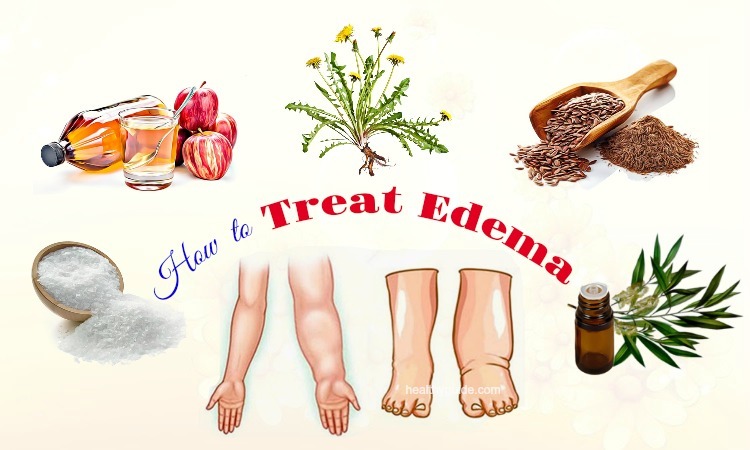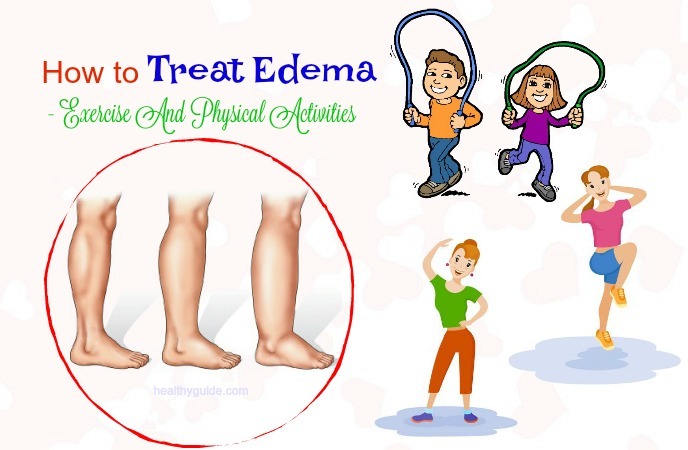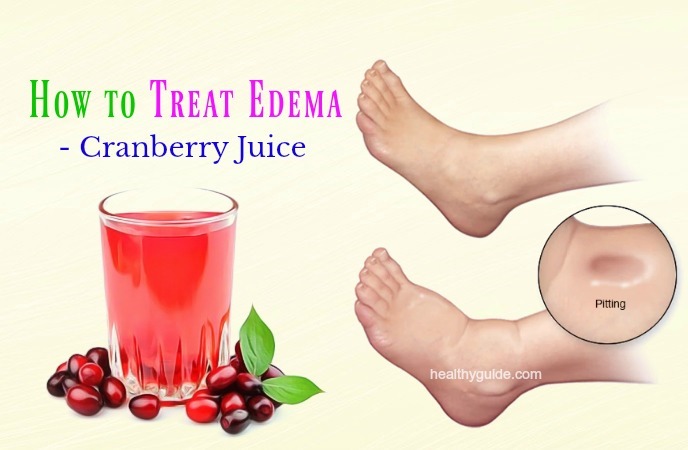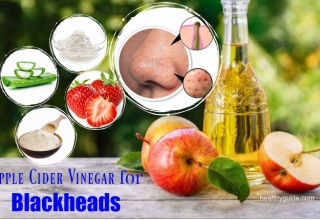Edema, also called oedema, hydropsy, and dropsy, is an accumulation of the body’s fluid in tissues, which can lead to swelling. Although edema can happen in any part of the body, it often puts impacts on the hands, legs, ankles, face, knee, and feet. About 4.4 million people in the United States have to deal with the signs and symptoms of edema. Thus, learning how to treat edema naturally at home is the purpose of many people out there. Let’s check out more with Healthy Guide.
- Top 26 Best Home Remedies For Leg Pain And Swelling Relief/ Top 30 Best Ayurvedic Home Remedies for Sciatica Pain in Leg During Pregnancy
CONTENTS
I. Edema Overview
Mild cases of edema may result from staying or sitting in one position for a very long time (several hours per day), a surgical procedure, malnutrition, high salt intake, premenstrual syndrome, insect bites, and commonly pregnancy.
Sometimes, it can be resulted as a side effect from medical intervention, including steroid drugs, nonsteroidal anti-inflammatory drugs, high blood pressure medications, estrogens and diabetes medications.
Certain triggers can increase your risks of having edema. These include kidney disease, hypertension, smoking, excessive drinking, a sedentary lifestyle and past surgeries involving removal of lymph nodes.
1. Signs & Symptoms Of Edema
In some cases, edema may be a sign of a concerning health issue, such as venous insufficiency, kidney disease, congestive heart failure, cirrhosis, arthritis, cancer, thyroid disease, deep vein thrombosis, as well as an allergic reaction.
- Increase in abdominal size
- Skin that retains a dimple (pits), after being pressed for pretty a long time (within seconds).
- Stretched or shiny skin.
- Puffiness or swelling of the tissue directly under your skin, particularly in your ankles, knee, legs, and arms.
2. Causes Of Edema
Edema is often a result of an injury to the body such as an infection or a fracture. Bee or jelly stings can also cause high risks of edema. When it comes to infection triggers, edema is more of a help as the fluid released as a result caused by an infection often consists of WBCs (white blood cells), and these cells are involved in dealing with and beating off the infections. Other than these, edema could also be caused by some other concerning underlying complications, according to a study [1].
- Pregnancy:Edema is very common among women during pregnancy. It often happens in the legs during pregnancy.
- Head Injury:Any injury to the head that leads to in a block in the drainage of cerebral fluid can also be a trigger factor of edema.
- Hypoalbuminemia:This is a disease that can result in edema. It is a term for deficiency of albumin and other proteins needed for the inside body, according to a research [2]
- Allergy:Edema can also be an allergic reaction to an allergen. The reason for this is that in case of an invasion by a foreign body, the body’s vessels leak fluid in the infected area to fight every probable infection.
- Blood Clot:A blood clot in any part of the body can also cause the edema issue. Similarly, any health issue that obstructs the fluids flow inside the body can cause the appearance of edema.
- Medical Conditions:Edema is often a result of concerning health issues like heart and liver diseases. Both these diseases may obstruct or slow down the body’s fluid flow, and this can lead to signs and symptoms of edema, according to a study [3]
II. Quick Tips
- Avoid standing and sitting in a long time period because it can promote the pooling of fluids in the feet.
- Avoid sudden changes in temperature because it can make the condition worse.
- Avoid drinking carbonated and caffeinated beverages.
- Keep the infected areas well-moisturized, clean, and free from injuries.
- Drink warm beverages, such as herbal teas, a few times per day.
- Consume a lot of water every day to fight against edema quickly. Along with water, eat vegetables and fruits with abundant water content.
- Consume foods that are abundant in potassium, such as raisins, bananas, tomato paste and juice, soybeans, white beans, and kidney beans. Potassium can aid a lot in eliminating the excess fluid from the body.
- Magnesium deficiency can also lead to signs and symptoms of edema, so taking a supplement can aid a lot in reducing symptoms of the condition. Consult your doctor for exactly safe dosage.
- Take vitamin B6 supplements (50 mg) 2 times per day. Consult your doctor before taking them.
- Use compression gloves, sleeves, and stockings to keep pressure on the limbs and prevent fluid from collecting in the tissues.
- Stop excessive drinking and smoking to prevent the development of edema.
- For leg edema, use pillows to raise the two legs above the level of your heart for half an hour, 2 – 3 times on a daily basis.
- For edema in the arms or hands, rest your arms above the level of your heart for about half an hour, 3 times per day.
- You can use a cold compress to reduce swelling on the feet during the pregnancy time.
- For swelling in the lower limbs, try soaking the feet in warm water within about five minutes, then soaking in cold water within just half a minute. Repeat 3 times per day to achieve the best results.
III. How To Treat Edema Naturally
Edema itself is not harmful, but as it can be a sign of an underlying condition, people need to have a checked by a doctor or try to cure it at home in mild case. Whatever the triggers are, you can get some relief from the symptoms of the condition with simple easy-to-follow natural remedies and lifestyle changes.
In this article, Healthy Guide shows readers some of the best tips on how to treat edema on hands, arms, face, legs, feet, and knee naturally at home that are easy to follow and do not require many efforts and money. Let’s check out more with us right below:
1. Dandelion
The herb dandelion can act effectively as natural diuretic and thus encourages the draining of fluid. It also contains potassium, which can aid a lot in balancing out the sodium in the body. This in turn can help to reduce inflammation and swelling caused by edema. Try these steps at home to know how to treat edema on feet, hands, face, arms, legs, and knee naturally just with the help of dandelion:
- Mix 1 tsp. of dried or fresh dandelion leaves in a cup of hot water.
- Cover, let it stay within about five to seven minutes and strain it.
- Drink two or three cups of dandelion tea on a daily basis.
Note: Avoid dandelion if you are facing the gallbladder problems.
Read More: 21 Best Easy Home Remedies for Plantar Fasciitis Pain and Heel Spurs
2. Parsley
Parsley is also a very useful thing to use when it comes to how to treat edema in feet, legs, arms, hands, face, and knee as it can help to reduce pain and swelling by helping your body remove excessive fluids. A research published in the Journal of Ethnopharmacology in 2002 discovered that parsley contains diuretic impacts. It even blocks the re-absorption of potassium and sodium. There are 3 methods that you can make use at home with the help of parsley:
- Add 1 tsp. of dried parsley to two cups of water. Boil it within about ten minutes, then strain it. Consume it once per day, in the morning before having breakfast.
- Another choice is to crush parsley leaves to create a paste, and apply it on the infected areas. Let it stay within about half an hour, then use warm water to wash it off. Repeat two times per day.
- In addition, consume more parsley by adding it to sandwiches, soups, salads, and other dishes.
Learn More: 16 Tips How to Treat Back Pain after a Fall, while Pregnant, & During Periods
3. Massage
Regular massage is another effective way to reduce swelling and pain caused by edema. Massaging with gentle strokes will create pressure on the infected muscle and skin areas. This can activate the lymphatic system and the fluid will drain away naturally.
- Warm some olive, mustard, or coconut oil.
- Use warm oil to massage the infected area gently.
- Do this several times a day.
Note: If your edema can occur during pregnancy, have your massage done by a therapist specializing in prenatal massage.
4. Tea Tree Oil
You can make use of tea tree oil as a tip on how to treat edema on arms, hands, legs, feet, knee, and face or inflammation triggered by insect bites or stings. Its analgesic and anti-inflammatory properties can reduce pain and swelling from edema.
According to a research published in the official journal of European Histamine Research Society in 2002, the components alpha-terpineol and terpinen-4-ol in tea tree oil can regulate edema. To cure edema triggered by insect bites or stings, put 3 – 5 drops of tea tree oil on a cotton swab and use it to apply directly onto the infected area. Wait for 5 – 10 minutes, then wash it off using warm water. Repeat as needed.
For mild edema cases, add 3 – 5 drops of tea tree oil to any carrier oil and use it to massage the infected area with outward strokes. Follow this treatment two times every day for a few days till the pain and swelling are gone.
Learn More: 24 Ways to Use Tea Tree Oil for Warts on Face, Hand, Scalp, Neck & Finger
5. Epsom Salt Bath
An Epsom salt bath can aid a lot in how to treat edema naturally and its symptoms, including inflammation, swelling, and pain. It can help to draw out excess fluids and toxins from the body.
Ingredients:
- Water
- 1 cup of Epsom salt
Directions:
- Add Epsom salt to the bath water.
- Soak and relax in that bath within about fifteen and twenty minutes.
- Alternatively, you can also try adding ½ cup of Epsom salt to a bucket of warm water and soaking your swollen legs in it within about ten to fifteen minutes.
How Often To Apply:
- Do this at least once every day.
Why This Works:
- Epsom salt is also referred to as magnesium sulfate. The magnesium in Epsom salt has anti-inflammatory properties that can help reduce swelling and inflammation, according to a study [4].
6. Apple Cider Vinegar
Apple cider vinegar is a very common treatment that can help a lot in reducing edema symptoms. Being abundant in potassium, it can aid a lot in replenishing potassium levels in the body and reversing fluid retention. In addition, its anti-inflammatory property can aid a lot in reducing pain and swelling.
- The first choice is to soak a towel in a mixture of equal amounts of warm water and apple cider vinegar. Wrap the towel on the affected area for several minutes. Do this a few times daily.
- Add 1 or 2 teaspoons of raw, unfiltered apple cider vinegar to a glass of water. Drink it twice daily.
Keep reading to learn more about how to treat edema in knee, feet, legs, arms, face, and hands naturally at home with Healthy Guide.
7. Flaxseeds
According to Ayurveda, using flaxseeds is a good remedy for edema. The anti-inflammatory property of flaxseeds can aid a lot in reducing swelling and pain caused by this condition. In addition, flaxseeds can help in detoxification, meaning that they help to get rid of harmful toxins.
- Add ½ tsp. of ground flaxseeds to 1 glass of warm water. Consume it two times per day.
- Alternatively, try massaging the infected area using flaxseed oil a few times every day.
8. Coriander Seeds
Coriander seeds are also very helpful tip on how to treat edema in face, hands, arms, legs, knee, and feet that you should not skip. The anti-inflammatory power of coriander seeds can help a lot in reducing pain and swelling. In addition, these seeds can help to boost the blood circulation inside the body
- Mix 3 tbsps. of coriander seeds in one cup of water.
- Heat it to a boil, then simmer till the water reduces by half.
- Strain and let it cool.
- Consume this two times per day till the symptoms are gone.
9. Reduce Salt Intake
High salt consumption will put you at higher risks for edema. High amounts of sodium can lead to the water retention in the tissues.
Health professionals recommend consuming less than 2,300 mg of sodium (about one teaspoon of salt) every day. Nevertheless, consult your doctor about the specific amount of sodium you need to consume one a daily basis. Follow these tips how to treat edema in hands, arms, legs, feet, knee, and face naturally at home:
- Limit your consumption of salty food items, such as fast food and pre-packaged snacks.
- Instead of consuming out, cook your meals at home. This will help you manage the amount of salt you are taking every day.
- Consume fresh fruits and veggies instead of canned versions, which usually contain added salt to preserve freshness and color.
- Enhance the taste of foods with herbs instead of salt.
10. Exercise And Physical Activities
Those who have a sedentary lifestyle are more vulnerable to edema. Exercise and other physical activities can aid a lot in preventing it as well as reducing the intensity of signs when edema happens.
- Move the muscles in the infected body part as much as you can. This can aid a lot in dissipating the fluid out of the tissues.
- Enjoy brisk walking and jogging within about half an hour per day.
- Do some yoga every day to aid in improving your circulation and preventing edema.
- Go swimming many times a week to reduce signs and symptoms of edema.
You can also consult your doctor about exercises to do that can help to relieve swelling.
11. Green Tea
Ingredients:
- 1 tsp. green tea extract
- Honey (optional)
- 1 cup of water
Directions:
- Add green tea extract to water and put into a boil in a saucepan.
- Add honey for flavour and consume right away.
How Often To Apply:
- Consume green tea at least two to three times every day for the best results.
Why This Works:
- The diuretic and stimulating properties of green tea can aid a lot in metabolizing the excess fluids inside the body. This, in turn, can also help in how to treat edema, according to a research [5].
12. Tart Cherry Juice
Ingredients:
- 1 glass of unsweetened tart cherry juice
Directions:
- Consume 1 glass of unsweetened tart cherry juice
How Often To Apply:
- Consume this juice two times per day
Why This Works:
- Tart cherries are rich in antioxidants and exhibit exceptional medicinal properties. The antioxidant nature of tart cherries is known to be effective in treating swelling and pain associated with edema, according to a study [6].
13. Castor Oil
Ingredients:
- Castor oil
Directions:
- Take some castor oil and use it to massage onto the swollen parts of the body.
How Often To Apply:
- Do this two times per day
Why This Works:
- Castor oil can boost the blood flow and healing process of your skin. The ricinoleic acid in castor oil can exhibit anti-inflammatory properties and can be of great use in curing the inflammation and swelling that come with edema, according to a research [7].
14. Oregano Oil
Ingredients:
- Five to six drops of oregano oil
- 30 ml of any carrier oil (olive oil or almond oil)
Directions:
- Mix oregano oil with a carrier oil or any oil you like
- Massage this mixture gently on the infected area
How Often To Apply:
- Do this two times per day to boost the healing process.
Why This Works:
- Oregano oil is antibacterial and antiseptic. Nevertheless, it is the anti-inflammatory properties of oregano oil that can aid in reducing the pain and swelling associated with edema, according to a research [8].
15. Nettle Tea
Ingredients:
- 1 cup of water
- 1 tsp. of dried nettle leaves
Directions:
- Add the dried nettle leaves to 1 cup of water and put it to a boil.
- Strain the water and take the tea before it is cold.
- You can also try adding honey for flavour.
How Often To Apply:
- Consume this tea 3 times per day
Why This Works:
- Nettle tea is made from the parts of a plant known as stinging nettle. This plant is extremely nutritious and also contains anti-inflammatory properties. It is known to clear toxins and excess fluids from your body by boosting the functioning of the kidneys. These properties of stinging nettle can aid a lot in the treatment and subsequent elimination of edema and the signs and symptoms of the condition, according to a study [9].
16. Ginger Tea
Ingredients:
- 1 cup of water
- 1 or 2-inch ginger
- Warm milk (optional)
Directions:
- Crush a small-size piece of ginger and boil it in 1 cup of water to make ginger tea
- Strain and take the blend before it is cold.
- Another choice is to chew on a piece of ginger or take 1 tsp. of dried ginger powder with 1 glass of warm milk.
How Often To Apply:
- You must do this one time every day.
Why This Works:
- Ginger has a compound known as gingerol, which is well-known for its medicinal and anti-inflammatory properties. Ginger is also a natural diuretic and can easily help in how to treat edema in face, hands, arms, legs, feet, and knee, as well as its symptoms, according to a research [10].
17. Mustard Oil
Ingredients:
- 1/2 cup of mustard oil
Directions:
- Warm the mustard oil
- Massage this gently onto your infected area.
How Often To Apply:
- Do this two times per day
Why This Works:
- Mustard oil has many medicinal and health benefits associated with it, according to a research [11]. It is well-known to boost the blood circulation and relieve the pain associated with edema.
18. Hot Or Cold Compress
Ingredients:
- A clean towel
- Warm water
- Cold water
Directions:
- Try taking a clean towel and soaking it in warm water.
- Wrap this towel around your body’s swollen area.
- Let it stay within about five minutes and unwrap.
- Then, soak the towel in cold water and do it again.
How Often To Apply:
- Do this two times per day till the swelling disappears.
Why This Works:
- As you apply a hot compress, there will be more blood flows to the area where it is applied. This can help to relieve the inflammation and pain associated with edema. Similarly, if you apply a cold compress on the swollen area, it will numb the infected area and also relieve inflammation and swelling, according to a study [12].
19. Vitamins
Ingredients:
- B-complex vitamins
· A multivitamin supplement that consists of Vitamin A, vitamin C, vitamin E
- Trace minerals, such as calcium, magnesium, zinc, and selenium
Directions:
- Include a multivitamin consisting of the above minerals and vitamins into your daily diet.
How Often To Apply:
- Consume this one time per day
Why This Works:
- Most of these vitamins are famous for reducing water retention and contains anti-inflammatory effect, according to a study [13]. Therefore, they can also be used in curing edema and its symptoms.
20. Turmeric
Ingredients:
- 1 glass of milk or water
- 1 tsp. turmeric powder
Directions:
- Blend the turmeric powder within a glass of hot milk or warm water.
- Consume it right away.
- Another option is to blend 1 tsp. of turmeric with a few drops of water to create a paste. This paste can then be applied on infected parts of your body.
How Often To Apply:
- Follow this remedy every night and morning till you see the edema disappear.
Why This Works:
- Turmeric has a compound known as “curcumin” that has detoxifying and anti-inflammatory properties. These properties can aid a lot in curing the pain and swelling associated with edema, according to a research [14].
21. Pineapple Juice
Ingredients:
- 1 cup of water
- 1/4 pineapple
Directions:
- Remove the pineapple skin and cut it into small-size pieces.
- Mix the two ingredients within a mixer with water and take the juice right away.
How Often To Apply:
- Do this one time per day.
Why This Works:
- Pineapples, scientifically known as Ananas comosus, are natural diuretics and abundant in a compound named bromelain. Bromelain is best known for its anti-inflammatory power, which can aid a lot in how to treat edema in feet, hands, legs, arms, face, and knee and its symptoms, according to a research [15].
22. Horse Chestnut Seed Extract
Ingredients:
- Horse chestnut seed extract (200 mg)
Directions:
- Take 200 mg of horse chestnut seed extract every day.
How Often To Apply:
- You must take this supplement every day for boosting the fast recovery.
Why This Works:
- Horse chestnut is a diuretic and also contains aescin compounds. These compounds exhibit anti-inflammatory and antiseptic properties. Together, these properties of horse chestnut extract can help you combat edema and its symptoms, according to a research [16].
23. Celery Seed Extract
Ingredients:
- 250-500 mg celery seed extract supplement
Directions:
- Add celery seed extract supplements into your diet.
How Often To Apply:
- You must take this supplement every day for availing its benefits.
Why This Works:
- Celery seed extract, scientifically referred to as Apium graveolens, is a diuretic with antimicrobial and anti-inflammatory properties. It is usually used to boost the urine output of the body in case of infections and you can use as a useful tip on how to treat edema in knee, feet, legs, arms, hands, and face, according to a research [17].
24. Cranberry Juice
Cranberry is a very popular fruit that many people loves because of its taste; and it can also help to cure a lot of health concerns and issues that can affect everyone. One of the best advantages that cranberry juice brings to the human life is that it can help in treating signs and symptoms of edema without requiring the usage of medical interventions, drugs, or pills.
Ingredients:
- Cranberry juice (unsweetened)
Directions:
- Consume 1 cup of cranberry juice.
How Often To Apply:
- You should consume this juice one time per day.
Why This Works:
- Cranberries are very abundant in several minerals such as potassium and calcium and also exhibit diuretic properties. These factors make cranberries a great natural remedy for the cure of edema, according to a study [18].
25. Olive Leaf Extract
Ingredients:
- 500 mg olive leaf extract capsules
Directions:
- Add olive leaf extract capsules into your diet every day.
How Often To Apply:
- Ensure that you consume this one time per day.
Why This Works:
- Olive leaf extract has some bioactive compounds. These compounds have anti-inflammatory and antioxidant properties that have proven to relieve oxidative and inflammation stress triggered by brain edema, according to a research [19].
26. Juniper Oil
Ingredients:
- 30 ml of a carrier oil (coconut or olive oil)
- 5 to 6 drops of juniper oil
Directions:
- Blend the essential oil with the carrier oil.
- Apply this blend on the infected areas.
How Often To Apply:
- Follow this regimen two times per day for the best results.
Why This Works:
- Juniper oil is well-known for its medicinal advantages. The detoxifying and diuretic properties of juniper oil help in relieving the water retention and swelling triggered by edema, according to a study [20].
27. Grape Seed Extract
This is the last tip how to treat edema in legs, arms, feet, hands, knee, and face naturally that everyone can apply at home.
Ingredients:
- 100 mg grape seed extract supplement
Directions:
- Add grape seed extract supplements into your daily diet.
How Often To Apply:
- You must consume this supplement two times per day.
Why This Works:
- Grape [21] seed extract can be used in the cure of edema as it contains antioxidant properties that can aid a lot with chronic venous insufficiency. This medical disease usually leads to swelling triggered by the pooling of blood in the legs.
After reading this interesting article, we hope that all of my readers can know clearly about how to treat edema in arms, face, hands, legs, knee, and feet naturally at home without having to use medical interventions or drugs. If you think that this list is helpful and can help other people around you to improve the condition case, feel free to share this list with them as soon as possible. One more thing, if you know other treatments coming from nature, remember to share them with us by leaving your comments in the comment box below.





































Leave a Reply